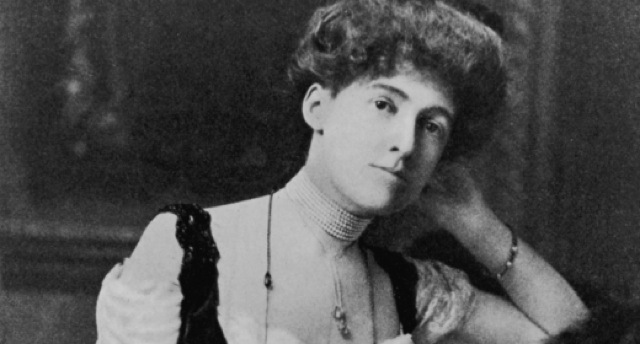 Edith Wharton, a Pulitzer Prize-winning author famous for novels set in the late 19th century, also wrote an influential book on interior design, long considered a sort of bible of American decorating.
Edith Wharton, a Pulitzer Prize-winning author famous for novels set in the late 19th century, also wrote an influential book on interior design, long considered a sort of bible of American decorating.
“The Decoration of Houses,” written before any of her novels, was radical when published in 1897. Co-authored with Wharton’s distant cousin Ogden Codman, it advocated classical simplicity and balance in contrast to the excesses of the Gilded Age.
The book was “the level-headed, indispensable book on the subject,” says interior decorator Thomas Jayne of Jayne Design Studio in New York City. He calls it “the most important decorating book ever written.”
Jayne has written a new book, “Classical Principles for Modern Design: Lessons from Edith Wharton and Ogden Codman’s The Decoration of Houses” (The Monacelli Press), that revisits the classic. He argues that Wharton’s fundamental ideas about proportion and the planning of space still create the most harmonious and livable interiors, whether traditional or contemporary.
His book traces contemporary ideas about design and decor back to Wharton and Codman, showing where the old and new approaches coincide and diverge.
Organized as “The Decoration of Houses” was, with distinct chapters on walls, doors, windows, ceilings and floors, Jayne’s book adds kitchens and the use of color – two major aspects of home design today that Wharton and Codman did not address.
Accompanying the text and selected quotes from Wharton and Codman’s original are lush photos of interiors from Jayne Design Studio that demonstrate Wharton and Codman’s design principles. Projects include the restoration of 18th-century public rooms in Crichel House in Dorset, England; a Montana mountain retreat; and an array of New York apartments and country houses.
Just as Wharton’s novels turned a probing and often critical eye on the excesses of upper-crust society, so her book on design was a reaction to Gilded Age and Victorian excesses in interiors, which were becoming crowded and fussy, Jayne said.
“This was Wharton’s first book. She had money and means, and had spent her teens and 20s looking at great rooms and homes. No one had ever written a book devoted entirely to decoration, as opposed to architectural treatises and what they then called `domestic economy books,”’ Jayne said in an interview.
“She offered an unusual combination of philosophical and practical advice. Interior decoration has to function, but she argued for a higher plane of design, with an emphasis on well-proportioned rooms – with well-placed and sized windows, and good structural elements like moldings, cornices and well-designed ceilings – as opposed to the distractions of too much furniture or unnecessarily fussy window dressings and flooring,” he said.
The book urged people to focus on well-proportioned rooms with “good bones,” Jayne said. “And that’s as true now as it was then.”
Wharton liked ceilings, he said, seeing them as neglected and perfect surfaces to influence the feel of the entire room. Jayne’s book shows several highly structured and painted ceilings to illustrate Wharton’s views.
Both the original book and Jayne’s work point out that beautiful rooms need not be costly.
“Baseboards and crown molding are sold by the yard at stores like Home Depot and are extremely affordable,” Jayne says, “and they do so much to provide structure to a room.” Furnishings, too, don’t need to be expensive – “they just need to be proportionate to the size and function of each room.”
If there is one main takeaway, Jayne says, it is that “tradition is not about the past or about elitism. Tradition is now. It’s active and important and democratic.”
His section on kitchens, which were ignored by Wharton because neither she nor many of her readers at the time prepared their own food, argues for eat-in kitchens, with a focus on kitchens as a gathering space.
And while Jayne ignores ballrooms, which were considered essential in Wharton and Codman’s day, he says the dining room remains important and should be included in any home large enough for one.
“It’s OK to have a room that is only used for parties or special occasions, assuming you can afford the space,” he said. “Dining rooms and ballrooms have the same kind of luxury. Wharton called these kinds of rooms `gala rooms.”’
“Living rooms should be living rooms and gala rooms should be gala rooms, but don’t make a hybrid. Each has its place,” Jayne said, echoing Wharton.
Jayne is also the author of “The Finest Rooms in America: Fifty Influential Interiors from the Eighteenth Century to the Present,” and “American Decoration: A Sense of Place,” a monograph on the work of his studio (both published by The Monacelli Press). -AP






